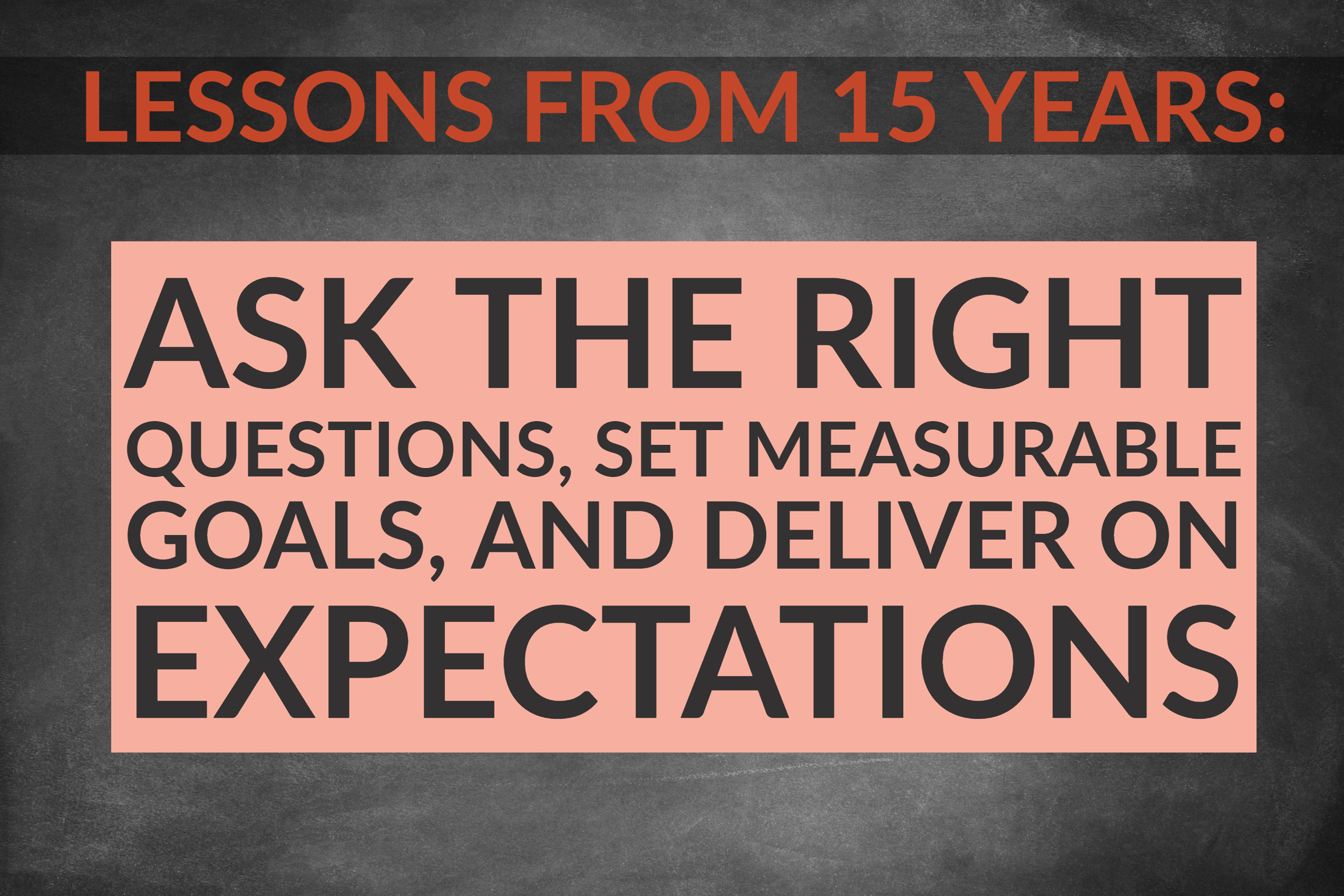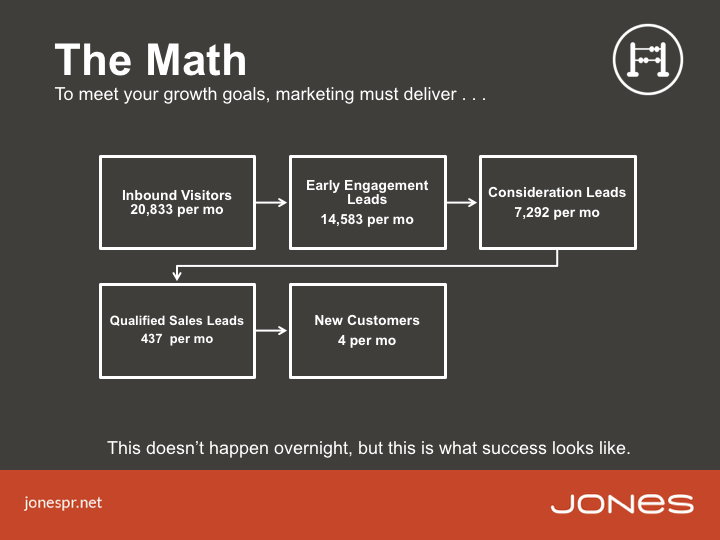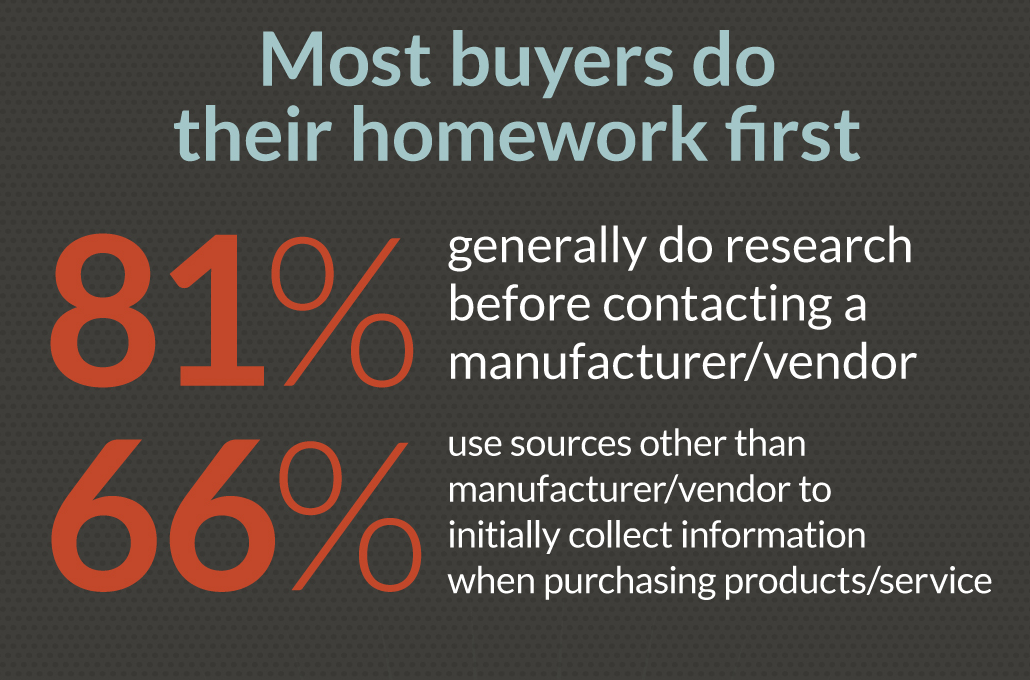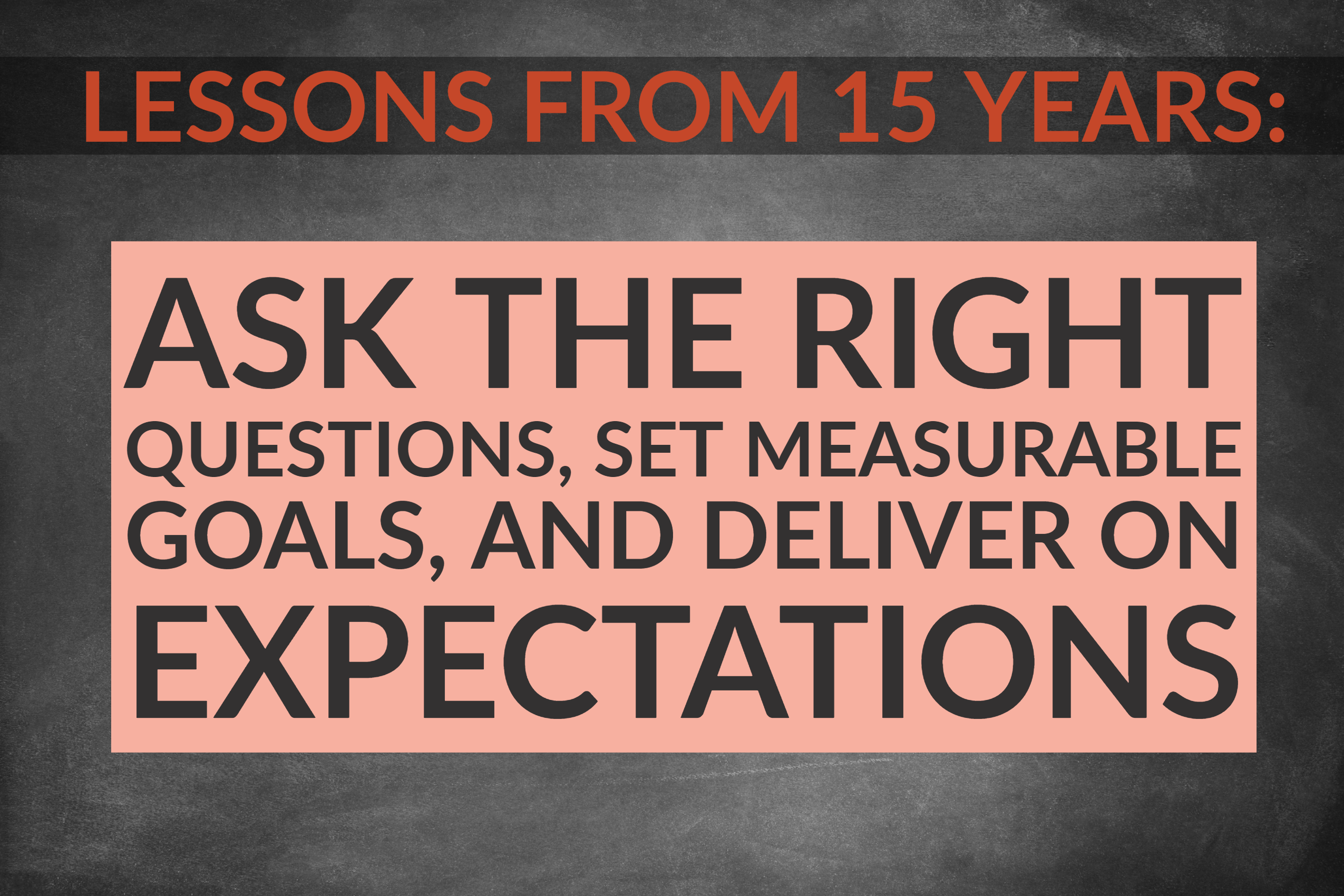Lessons From 15 Years: Ask The Right Questions, Set Measurable Goals, And Deliver On Expectations

Sometimes the most important lessons are those that may seem obvious or simple, but which are overlooked and ignored in the search for the next big thing. We, as humans and as marketers, sometimes convince ourselves that success is complicated and that the best strategy is something we haven’t yet tried.
We forget to go back to the basics upon which a successful marketing strategy should be built. This can be especially true of agencies that strive to differentiate themselves by being creative and innovative and coming up with new ideas to wow and woo potential clients. But when the very foundations of a marketing strategy are ignored, the whole thing tends to collapse.
This Marketing Lesson post focuses on the three simple (not easy, but simple) steps that every marketing strategy should build from.
This post is one in a 15-part series looking back at the lessons learned in my 15 years as founder and owner of JONES Marking & PR. Find earlier posts in the series here:
-
Lessons From 15 Years: If You Are Curious, You Can Make Anything Interesting
-
Lessons From 15 Years: Today’s Strong Relationships Are Tomorrow’s Enduring (Or New) Accounts
My Marketing Lesson #4: Ask the right questions, set measurable goals, and deliver to expectations.
Simple, right? Doesn’t everyone do this?
Unfortunately, no. Too often, marketers — both in-house teams and agency partners — jump straight into brainstorming big ideas and creative content because that’s the “fun” part of marketing. They forget to take these essential first steps to create a foundation on which to build the specific campaigns and content.
1. Ask the right questions so you know what is most important.
Agencies, especially, need to ask a lot of questions in order to develop a strong proposal and successful strategy. When first working with a new client, this discovery process is essential to getting to know the company and getting started on the right foot with a plan that will achieve the client’s goals — not just what the agency thinks the client wants to achieve. But questions aren’t a one-time thing, either. Each new campaign should start with a round of the queries outlined below. Even in-house marketing teams should take the time to ask these questions of the C-suite to ensure that what they are doing meets corporate needs and objectives, and to show their worth when it comes to budget requests in the future.
The possible questions an agency (or in-house marketing) team could ask at the very beginning of developing a marketing strategy are nearly innumerable, and in many ways mirror the smart questions top sales representatives ask when positioning their solution with a potential customer. I have lists of dozens of possible questions, but some of the most important boil down to these:
-
What are you trying to achieve?
-
What have you tried in the past?
-
What has worked well?
-
What would you like to improve?
-
What does success look like to you?
-
Would this (service, tactic, outcome) be of value to you?
My interest in developing a habit of asking smart questions was spurred by the same client I talked about in my lesson on making anything interesting: HP. If you read that lesson, you’ll find that the focus of the PR and marketing program I developed with them was ink. Not the higher-cost products like printers and computers, but ink. Why?
Because ink, a consumable, high-margin product, was the company’s primary revenue driver. It wasn’t the most exciting product HP made, but it was the most profitable.
That is why an agency or marketing team should always ask what drives revenue for the company and what the company or CEO wants to achieve. If you don’t know what the objective is for the company, and you don’t know what products drive that revenue, and you’re promoting something else, that’s not doing the company any good.
I don’t care how sexy and exciting Product A is if it’s not a revenue driver. You need to talk about the products or services that are in the company’s revenue strategy, and you need to make them interesting. But you’ll never know that if you don’t ask the right questions.
-
What does your company need to do to achieve revenue goals?
-
Which products or services are the focus for the sales team this year?
-
Which products and services have the highest profit margins?
-
Are you trying to expand into a new market segment or new geography?
2. Set reasonable, measurable goals.
Asking the right questions is essential in order for you to be able to set the appropriate goals for marketing plans. You have to know what you want to achieve in concrete terms that matter to the CEO, CFO and other members of the executive team, not just marketing metrics that may not reflect actual corporate objectives.
When JONES stepped in to help healthcare management consulting firm Primaris launch into the public market, after years of strictly serving government clients through RFPs, we asked the hard question about what the company needed to achieve for success:
How many new customers do you need?
That gave us the baseline goal from which to set our additional marketing targets, working backward to determine:
-
How many qualified leads do we need to generate the number of new customers needed?
-
How many new contacts will it take to get that number of qualified leads?
-
How much website traffic will we need to generate through inbound marketing efforts (blog posts, white papers, social media) to generate those contacts?

By asking those questions when we first meet with a client, we can use standard industry metrics and calculators, along with the current results a company is achieving, to determine what the program needs to look like to achieve that top-level goal of attracting new customers and driving revenue.

From this type of analysis, we can then outline a specific plan of deliverables needed to achieve those goals: whitepapers, blog posts, videos, website content, social media content, etc. Especially for agencies, having the specifics spelled out in the agreed-upon plan is essential. Detail what the agency is creating, what the company is creating in-house, and how each piece will fit together and fit into the timeline, including things that may seem to be outside the usual scope of agency involvement, such as trade shows and sale support needs.
It isn’t an exact science, as every industry, target audience, and brand is unique. We start with an educated guess, then as we see the metrics each month — how each individual channel or piece of content performed — we adjust the strategy as needed if things aren’t working as we expected. Those metrics also need to be shared with all stakeholders. We need to know as a team — agency and client — what is working and what’s not, what we need to do more of, what we can do less of, and how we can support each other.
3. Deliver to meet expectations.
Having a detailed plan, with specific goals, ensures that everyone has the same expectations. It means both agency and client can check the boxes on the same list of deliverables and the same level of performance.
As I mentioned last week, one of the most important things an agency can do to maintain a strong relationship with clients is do what you say you will do. (See Lessons From 15 Years: Today’s Strong Relationship Are Tomorrow’s New (Or Enduring) Clients.)
Adjusting the strategy as needed to deliver to expectations is also a part of being flexible and keeping the client’s end goal in mind.
We also, however, need to be willing to be the voice of reason based on our experience, and recognize what goals are truly achievable. If we fall into a trap of trying to force greater performance than is possible with the current strategy (for example, by continually going beyond the contracted agreement), then we are setting up both our agency and the company for disappointment. (Keep watching this series of “Lessons” for an upcoming article on my No. 1 tip for avoiding the pitfalls of over-promising or over-servicing accounts. If you subscribe now to the Inbound Accelerator, you’ll get each new article delivered directly to you so you won’t miss it.)
Three steps. Simple, right? But definitely not easy.
Asking the right questions requires doing a lot of prep work before even meeting with a client (or your boss, if you are part of an in-house team), and you have to get them to agree to take time to fully answer the questions so that you have the best information possible to work with.
Setting goals requires doing the math from the beginning, which isn’t always easy, either.
And delivering the content and performance that meets expectations all around? Well, that is the part of marketing most of us understand best. But again, it isn’t easy. (Check these resources for our top-level tips on making sure you are delivering great content: Why Creating Great Content Matters and Rate Your Marketing Content Creation and Promotion. Or try this quiz: Grade Your Marketing Agency’s Content Creation Performance.)
If you commit to keeping these simple (but not always fun or easy) steps at the forefront of your planning process, the creation process will be easier and more successful. I promise.
This is the fourth of 15 lessons I plan to share throughout 2019 in honor of the 15th anniversary of the founding of JONES Marketing & PR. The next article in the series will focus on lessons that apply specifically to B2C marketing. Keep checking in so you won’t miss it.
-1.png?width=1652&height=294&name=Jones(RGB)-1.png)








%20Accounts.png?width=352&name=Lessons%20from%2015%20Years_%20Today%E2%80%99s%20Strong%20Relationships%20Are%20Tomorrow%E2%80%99s%20Enduring%20(Or%20New)%20Accounts.png)



